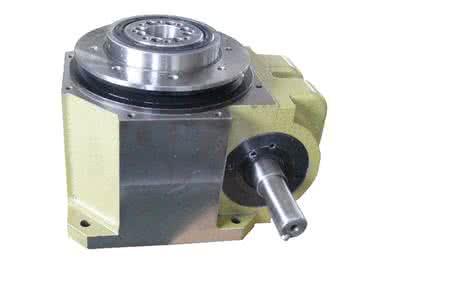In principle, the segmentation action of the cam indexing rotary table is determined by the contour shape of the cam. The design of a cam is based on specific mathematical models and mechanical motion requirements. In general, the segmentation angle of a cam splitter is a fixed value determined during the design and manufacturing stages, such as common standard angles such as 45 °, 60 °, 90 °, 180 °, etc. This is because the contour curve of the cam is accurately machined according to these standard and regular angles to ensure stable and accurate intermittent motion and fixed angle indexing during continuous rotation.

In the actual manufacturing process, machining accuracy and cost are also limiting factors for achieving arbitrary angle segmentation. To produce a cam that can achieve arbitrary angle segmentation, high precision is required for the processing equipment. Because the contour curve of the cam must be perfectly matched with any desired angle, advanced CNC machining equipment and complex programming are required to achieve this. Moreover, such customized processing will lead to a significant increase in costs, which is not cost-effective from an economic perspective in most industrial application scenarios. However, through some special designs and combinations, it is possible to approach the effect of arbitrary angle segmentation to a certain extent. For example, a multi-stage cam splitter can be connected in series. By reasonably setting the segmentation angle of each stage cam splitter, and through calculation and combination, some non-standard angle segmentation results can be obtained. Alternatively, auxiliary mechanical transmission mechanisms such as planetary gear systems can be added to the output of the cam splitter to fine tune the splitting angle by changing the transmission ratio. But these methods all have certain limitations. Connecting multi-stage cam dividers in series will increase the complexity and volume of the system, and the accuracy loss of each stage will accumulate, affecting the final segmentation accuracy. Adding auxiliary transmission mechanisms may also introduce additional errors and mechanical losses. In summary, it is difficult for cam dividers to achieve arbitrary angle segmentation, but some special methods can be used to adjust the segmentation angle within a certain range to meet the needs of some non-standard angle segmentation.
 Cheng Shen Precision Machinery (Shanghai) Co., Ltd.
Cheng Shen Precision Machinery (Shanghai) Co., Ltd.